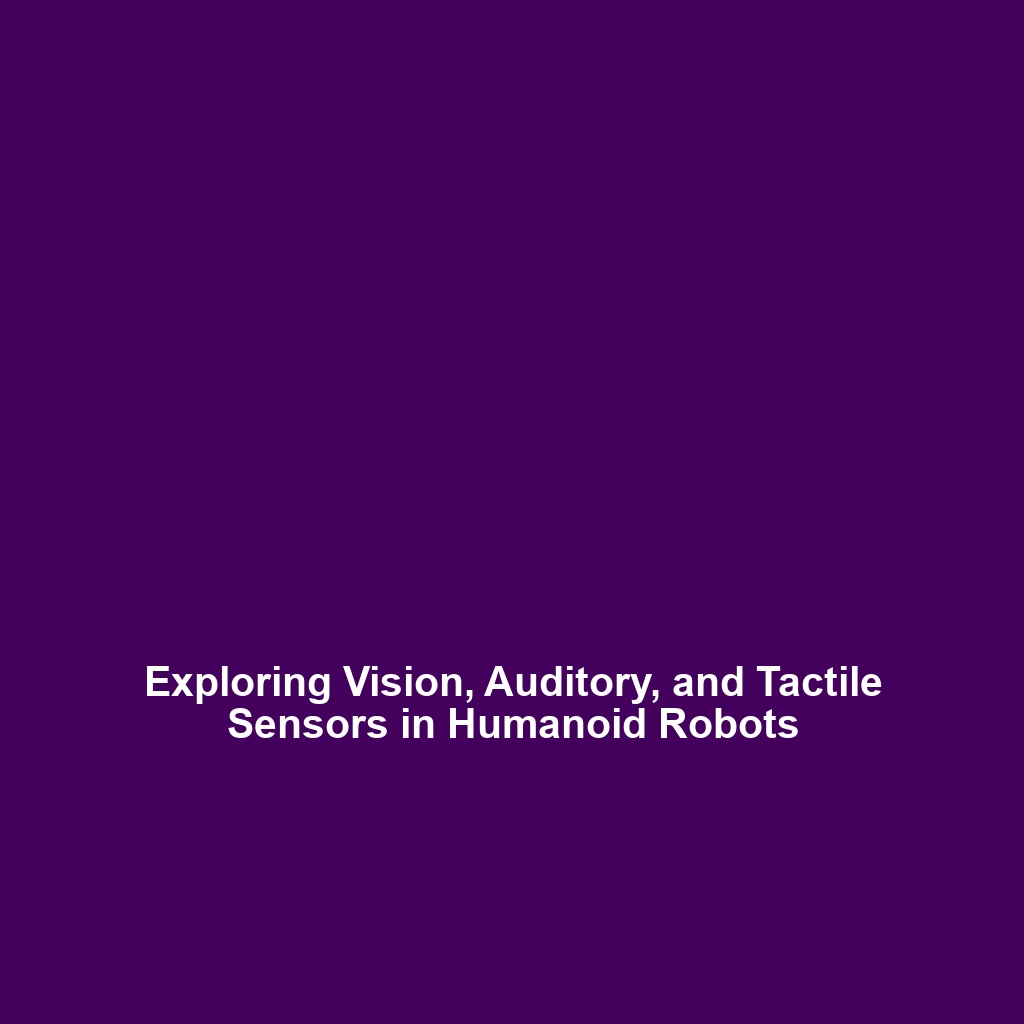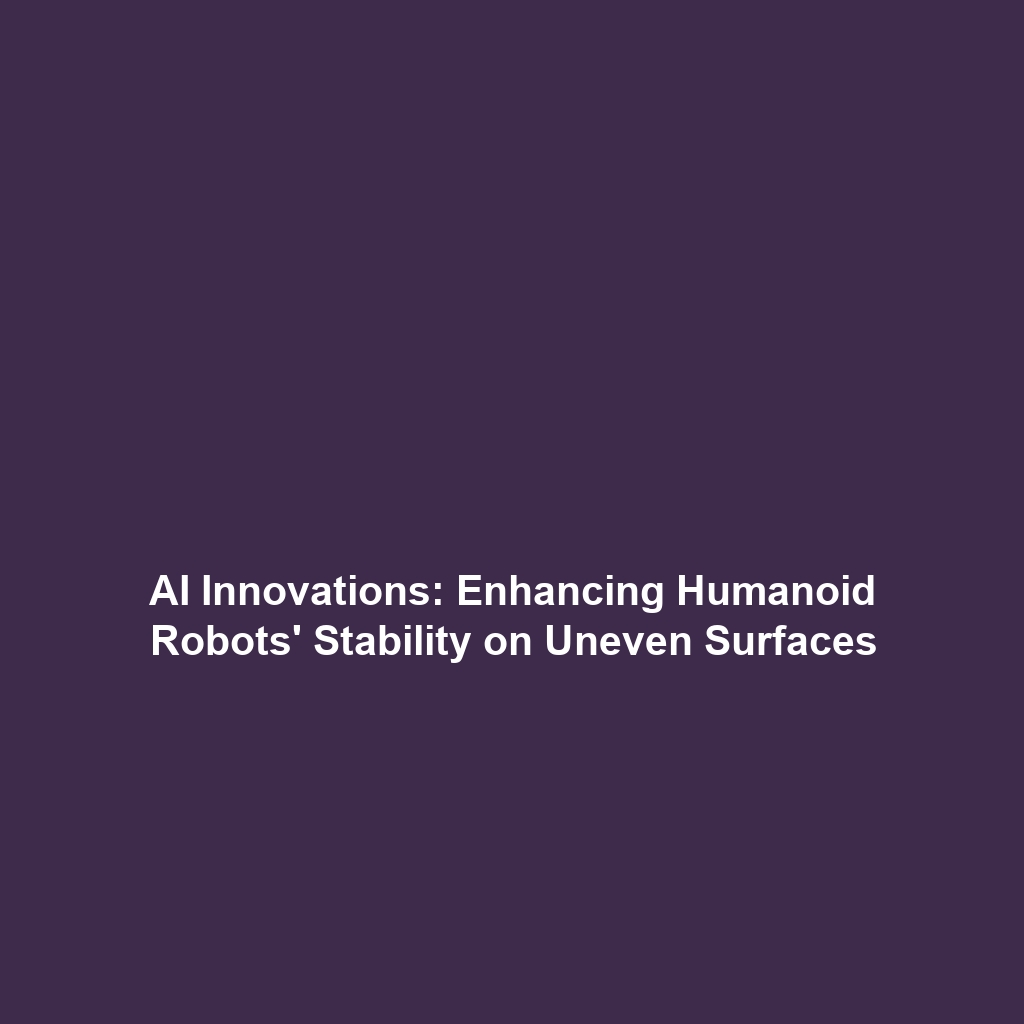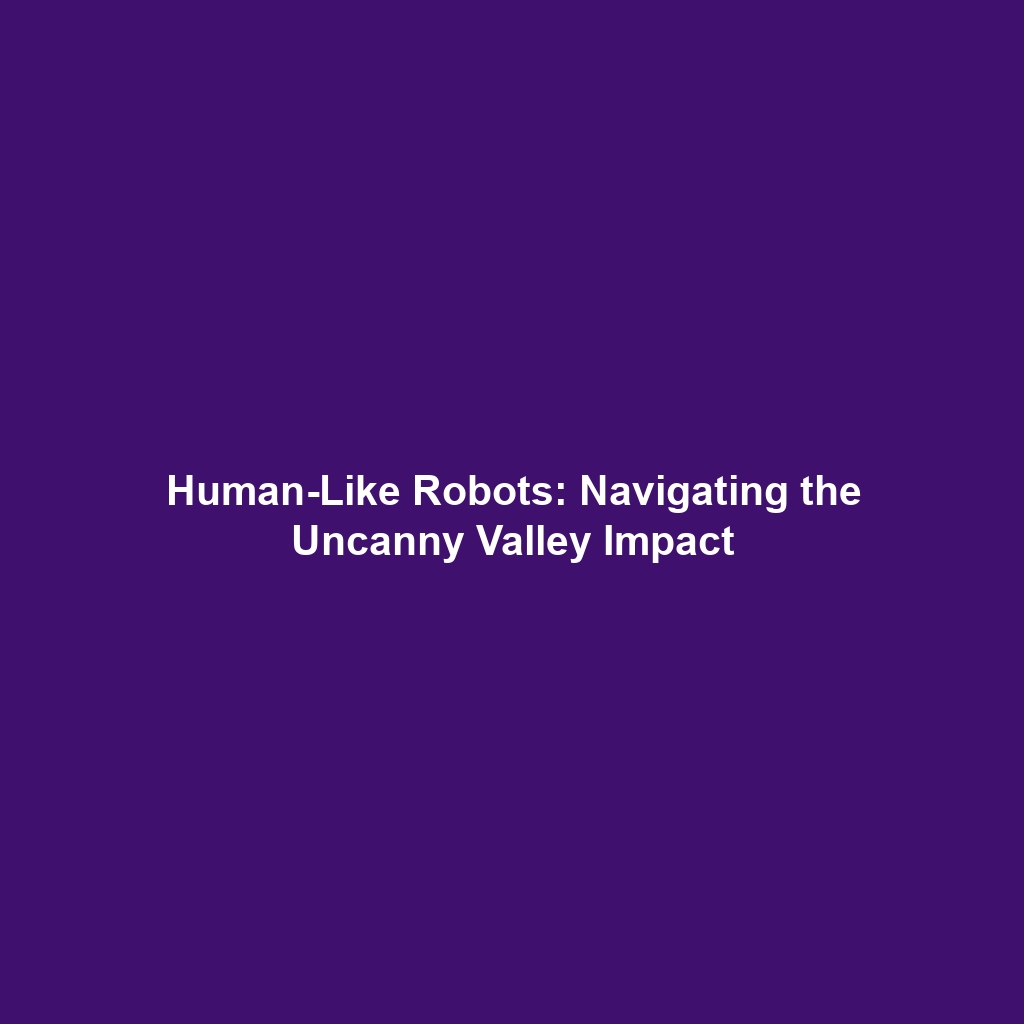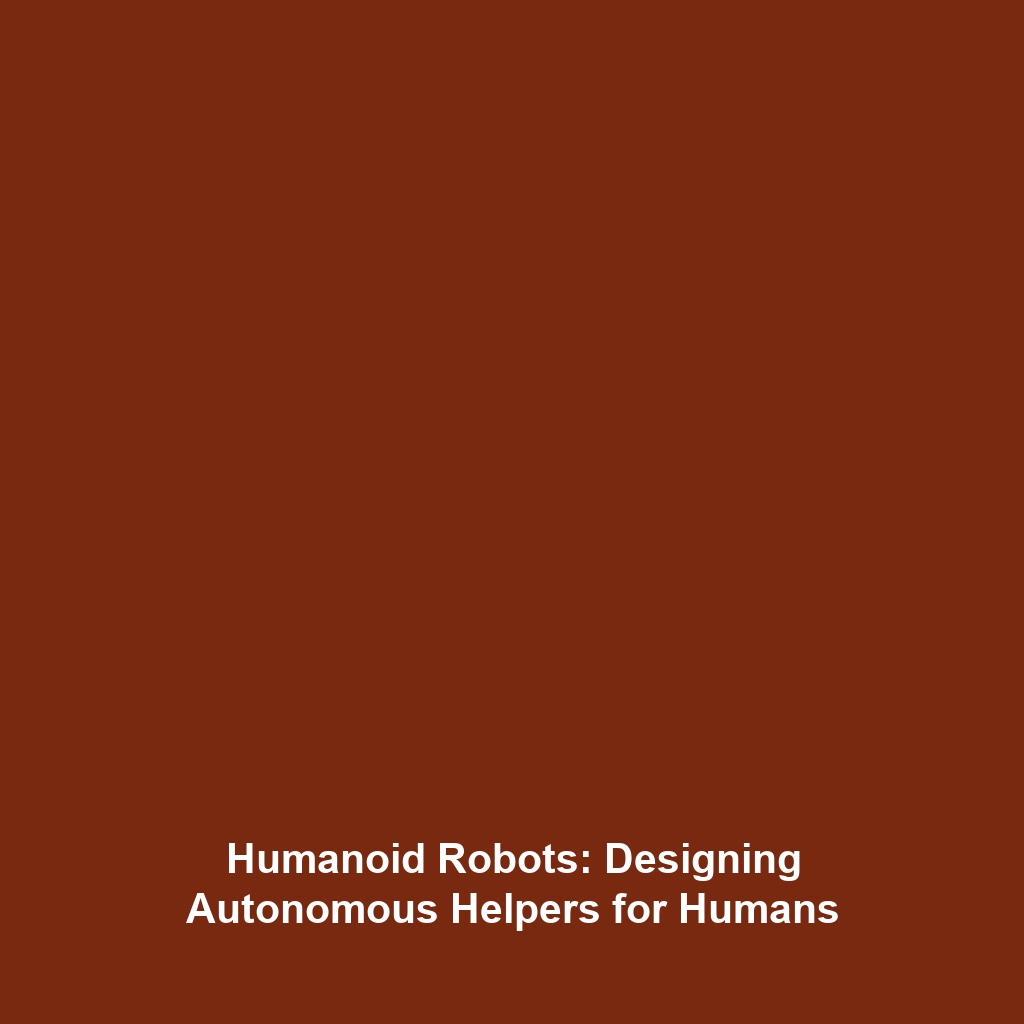Types of Sensors Used in Humanoid Robots
Introduction
Humanoid robots are designed to interact with humans and their environment in a natural way, which makes the integration of effective sensors crucial. The types of sensors used in humanoid robots, including vision sensors (cameras), auditory sensors (microphones), and tactile sensors (pressure sensors), play an instrumental role in this dynamic interaction. These sensors allow robots to process visual, auditory, and tactile information, mimicking human senses and enhancing their operational capabilities.
Key Concepts
The fundamental sensors utilized in humanoid robots can be classified into three main categories:
Vision Sensors (Cameras)
Vision sensors are critical for humanoid robots, allowing them to perceive and interpret visual data from the environment. Cameras equipped with advanced image processing technology enable robots to recognize objects, navigate spaces, and engage in facial recognition.
Auditory Sensors (Microphones)
Auditory sensors are essential for enabling humanoid robots to respond to sound. Microphones equipped with noise-cancellation capabilities enhance the robot’s ability to comprehend spoken language, facilitating more natural interactions with humans.
Tactile Sensors (Pressure Sensors)
Tactile sensors replicate the sense of touch, allowing humanoid robots to detect pressure, texture, and temperature. These sensors enhance the robot’s ability to interact safely and effectively with objects and people, ensuring appropriate force is applied during tasks such as gripping or supporting.
Applications and Real-World Uses
The applications of types of sensors used in humanoid robots are vast and varied. Here are some key areas where these sensors significantly contribute:
- Healthcare: Humanoid robots equipped with all three types of sensors assist in medical settings, providing companionship for patients and supporting healthcare professionals with diagnostic tasks.
- Education: In educational environments, humanoid robots serve as interactive teaching aids, using auditory sensors to engage with children and vision sensors to respond to gestures and actions.
- Service Industries: Robots in hospitality utilize tactile sensors for physical interactions and vision sensors for navigating environments and recognizing customers.
Current Challenges
Despite the advancements in sensor technology, several challenges persist in the field of humanoid robotics:
- Integration Complexity: Combining multiple sensor types into a cohesive system remains technologically challenging, often leading to integration issues.
- Environmental Variability: Sensors may struggle to operate effectively in fluctuating environmental conditions, affecting their reliability.
- Data Processing: The massive amounts of data generated by these sensors require powerful processing capabilities, which can be a limitation in real-time applications.
Future Research and Innovations
Ongoing research aims to overcome these challenges by exploring innovative sensor technologies, such as:
- Advanced AI Integration: Future sensors may incorporate machine learning algorithms for enhanced decision-making and adaptability.
- Biometric Sensors: Innovations may lead to sensors that can replicate more nuanced human senses, improving interaction capabilities.
- Miniaturization: Research into reducing the size of sensors will allow for more compact and efficient humanoid robot designs.
Conclusion
In summary, the types of sensors used in humanoid robots, encompassing vision, auditory, and tactile sensors, are fundamental to their operation and interaction in the real world. Understanding their significance can lead to advancements in robotics technology and its applications. For further exploration, consider reading about the future of humanoid robots or innovative sensor technologies.









